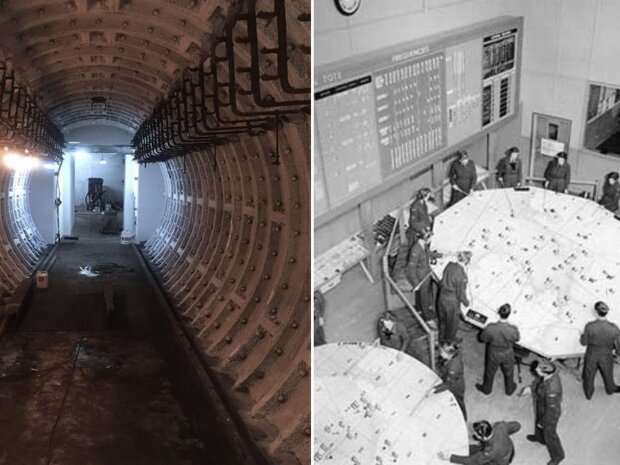It was designed to withstand a nuclear attack and protect government officials and military personnel in the event of a nuclear war.
The bunker was in use for over 40 years, and its secrets have only recently been revealed.
The bunker was constructed in a disused quarry, which provided an ideal location for its underground layout.

The site was chosen for its strategic location and natural defences, with the surrounding hills and forests providing added protection from potential attackers.
It is the largest nuclear bunker in the UK and can house over 600 people for an extended period of time in the event of an emergency.
One of the secrets of the bunker is its sheer size. It spans over 35,000 square feet and has three levels, with a network of tunnels and rooms that are interconnected by staircases and elevators.
The bunker was designed to be completely self-sufficient, with its own water supply, ventilation system, and power generators.
The first level contains the entrance gate and decontamination area, the second level consists of communication centres, anti-radiation rooms and living areas.
The third level is the deepest and contains fuel chambers and other technical facilities.
One of the secrets of the bunker is its exact location. To ensure maximum security, the location of the bunker is strictly guarded and inaccessible to the public.

There is only one entrance to the bunker, which is guarded by a high password and metal barriers.
Another secret of the bunker is its advanced security features. The site was heavily guarded, with armed guards stationed around the perimeter and access only granted to authorized personnel.
The bunker was also designed to be completely sealed off from the outside world, with thick concrete walls and blast doors that could withstand a direct nuclear blast.
Inside the bunker, there were living quarters, a canteen, a medical center, and even a small cinema. The rooms were designed to be comfortable and functional, with basic furnishings and equipment.
There were also communication rooms, where government officials and military personnel could communicate with the outside world and coordinate their response to a nuclear attack.

Officially, the bunker ceased its operations in 1992, but even after that time it was kept in readiness.
Another mystery is the technical characteristics of the bunker. Most information about this remains confidential.
Barnton Quarry, located near Edinburgh, Scotland, is one of the largest and most unique nuclear bunkers in the world. Built during the height of the Cold War in the 1950s, it was designed to withstand a nuclear attack and protect government officials and military personnel in the event of a nuclear war. The bunker was in use for over 40 years, and its secrets have only recently been revealed.
The bunker was constructed in a disused quarry, which provided an ideal location for its underground layout. The site was chosen for its strategic location and natural defenses, with the surrounding hills and forests providing added protection from potential attackers.
One of the secrets of the bunker is its sheer size. It spans over 35,000 square feet and has three levels, with a network of tunnels and rooms that are interconnected by staircases and elevators. The bunker was designed to be completely self-sufficient, with its own water supply, ventilation system, and power generators.
Another secret of the bunker is its advanced security features. The site was heavily guarded, with armed guards stationed around the perimeter and access only granted to authorized personnel. The bunker was also designed to be completely sealed off from the outside world, with thick concrete walls and blast doors that could withstand a direct nuclear blast.
Inside the bunker, there were living quarters, a canteen, a medical center, and even a small cinema. The rooms were designed to be comfortable and functional, with basic furnishings and equipment. There were also communication rooms, where government officials and military personnel could communicate with the outside world and coordinate their response to a nuclear attack.
Despite its advanced design and security features, the bunker was never used in an actual nuclear war.
However, it was in operation during several periods of heightened tension, including the Cuban Missile Crisis in 1962 and the Falklands War in 1982.
Today, the Barnton Quarry bunker is no longer in use and has been decommissioned. However, it remains an important historical site and a testament to the fears and anxieties of the Cold War era.
Its secrets continue to fascinate and intrigue people, and the bunker serves as a reminder of the importance of preparedness and vigilance in times of crisis.
Read more: The main reasons why cats are so fond of elevated places to rest: expert observations
As we wrote earlier: The owner sang a song to his cat, and the pet decided to join the duet





































